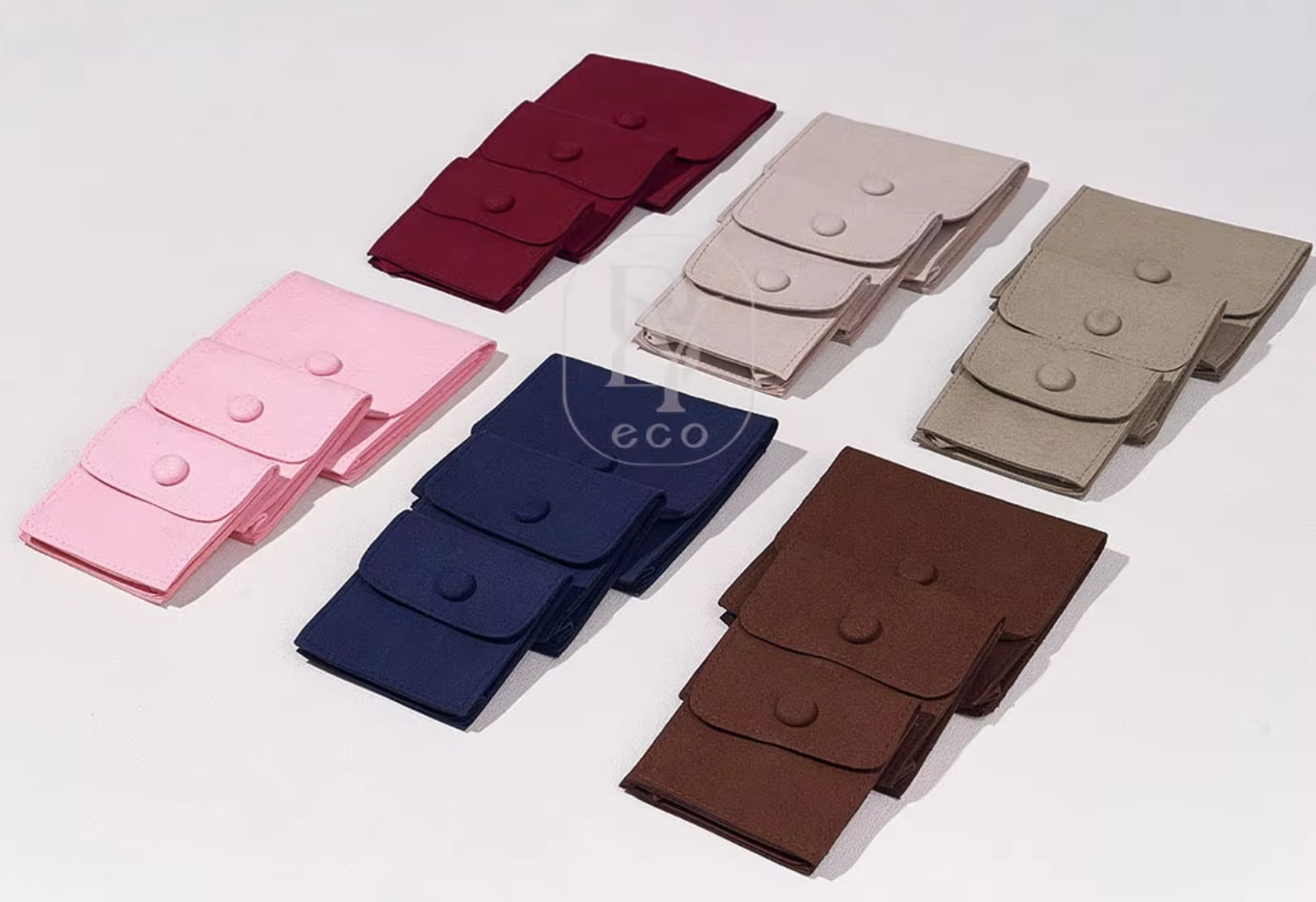You can share
- Share to Facebook
- Share to Google+
- Subscribe to our
- Share to Linkedin
- Share to Twitter

The choice of materials for customized jewelry bags is actually the dual protection of the brand's soul and the life of jewelry. According to industry reports, 72% of high-end jewelry customer complaints are caused by transportation friction damage, and choosing the right material can reduce the risk by 90%. This article will deeply analyze the protection codes of five core materials, such as velvet.
The velvet in top-level jewelry bags is not ordinary flannel. Its secret lies in the precise structural design. It uses 22mm ultra-long velvet warp yarn and is woven with a high-density W-type consolidation method. The number of pile heads per unit area reaches 120,000 bundles/cm². After three shearing processes, the height of the velvet is precisely controlled at 3.2±0.1mm, forming a silky touch like a swan's chest. In order to overcome the problem of static electricity, the Swiss workshop developed ion beam bombardment technology, using argon ion beams to modify the fiber surface in a vacuum environment, so that the static electricity value is stable ≤0.3kV, which is 100 times lower than that of winter sweaters. Data from Cartier's laboratory shows that its patented velvet bag reduces the average annual number of scratches on diamond rings from 3.7 to 0.2.

When jewelry needs extreme care, 6A-grade mulberry silk is the only choice. Silk fibers with a diameter of only 11 microns are plasma polished, and the friction coefficient is as low as 0.07 (about 1/4 of velvet). The Italian workshop's original double-sided different-color weaving method: the outer fabric presents the brand color with a density of 120 needles per centimeter, and the lining is woven with champagne gold satin into optical bright silk, which instantly refracts the starlight effect when the bag is opened. More importantly, its natural protein structure, sericin, containing 18 amino acids, forms an antioxidant barrier. Bulgari's after-sales data shows that the average annual oxidation area of silver jewelry packaged in silk bags is 79% less than that of cotton bags.
The new generation of environmentally friendly materials is subverting traditional cognition. Recycled PET bottles are made into 0.05 denier microfibers (equivalent to 1/200 of a hair), and a micron-level air cushion structure is formed through a high-pressure hydroentanglement process. The tear strength of this recycled velvet is 52N, which is 2.3 times that of velvet, but only requires 1/8 of its water consumption. The vibration test of the German laboratory shows that in an environment simulating international transportation, the material's protection efficiency for gems exceeds that of silk by 17%.
For precious jewelry circulating around the world, intelligent materials have shown revolutionary breakthroughs. Phase change material (PCM) microcapsules are implanted into organic cotton base fabrics. When the ambient temperature exceeds 32°C, it automatically absorbs heat and stores energy, and releases heat when the temperature is below 18°C. Combined with a monitoring network woven with silver-plated conductive yarn, the temperature difference in the bag can be maintained at ≤2.8°C in an environment of -25°C to 60°C. Sotheby's Transportation Department's actual test proves that jewelry bags equipped with this technology successfully protect emeralds from crossing the Sahara Desert and avoiding fatal thermal stress cracks. The latest version is embedded with a fiber optic sensing system, which automatically sends an alarm to the mobile phone APP when the bag is under pressure exceeding the safety threshold.
(1) Functional adaptation matrix
- Diamonds/gems: Velvet is preferred (velvet cushioning > scratch resistance)
- Artistic gold jewelry: Recycled technology velvet (ductility > protection)
- Auction-level jewelry: Smart temperature control material (environmental stability is preferred)
(2) Process red line standards
- Velvet must pass the ASTM D737 air permeability test (≥400mm/s)
- Silk bags must be tested for pH value (5.5-7.0) and formaldehyde content (≤20ppm)
- Smart materials must pass 50 hot and cold cycle tests (-30℃↔80℃)
(3) Sustainable certification
- Global Recycling Standard (GRS) certification ≥95%
- Carbon footprint tracking (≤0.8kg CO2e per bag)
- Biodegradable certification (decomposition rate in soil >90%/year)
When the customer opens the safe ten years later, the once neglected jewelry bag tells of the years of protection with its honey-glowing fluff, and the tactile memory of velvet instantly activates the throbbing of the proposal - this is the real value anchor of luxury brands.